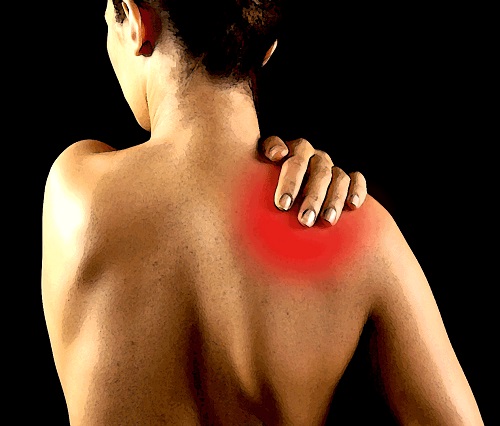Positive Health Online
Your Country

Neck Pain and the Primary Control
by Stephen Braybrook(more info)
listed in back pain, originally published in issue 216 - August 2014
Neck pain is a common problem in adults and is the most common musculoskeletal problem in people with sedentary jobs. It is also quite common in college students. Neck pain prevalence has been increasing during the past several years, ranking behind low back pain as the most common musculoskeletal disorder. Related facts include:
More than 50% of adults have had neck pain during the past year, with around two-thirds of the population having neck pain at some point in their lives. The incidence of neck pain is increasing in younger ages and people with chronic neck pain use the health system twice as much as the rest of the population.

Neck pain may arise due to muscular tightness in either the neck and upper back, or pinching of the nerves emanating from the cervical vertebrate. Joint disruption in the neck creates pain, as does joint disruption in the upper back.
The head is supported by the lower neck and upper back and it is these areas that commonly cause neck pain. The top three joints in the neck allow for most movement of the neck and head. The lower joints in the neck and those of the upper back create a supportive structure for the head to sit on. If this support system is affected adversely, then the muscles in the area will tighten, leading to neck pain. When the head is in a forward head position this can lead to chronic pain, numbness in the arms and hands, improper breathing and even pinched nerves. This is because every inch your neck goes forward there is an extra 10 lbs. (4.5 kg) of weight on your neck. Many people do not even realize that they have poor neck posture, so it is advisable to test your posture to see if prolonged computer use, television viewing or incorrect sleeping positions have affected how you hold your head. If you determine that your posture does need correction, you will need to strengthen your neck muscles with exercises. Add this short exercise regime to your daily routine and your tension and other symptoms will start to fade.
Follow these steps to correct forward head posture:
Firstly, check your posture to see if you have a forward head position. If this is the case then follow these 4 stages:
Stage 1 - Stand against a wall, with the body as flat to the wall as you can;
Stage 2 - Notice whether the back of your head touches the wall;
Stage 3 – Align the head so that it is in the correct posture by touching the back of your head to the wall. Next, pretend that there is a string going from the base of your neck to the top of your head. Imagine pulling that string up from the top, thus lengthening the neck. As the back of your neck gets longer, your chin should tuck forward towards the back of your neck. This is the correct neck and head posture. Make sure you are not simply moving your head backwards and increasing the curve of the neck, as this is improper posture but rather focus on creating upward length in the back of the neck;
Stage 4 - Stand in this position for 1 minute and return to this position frequently to review how your posture is changing.
If you feel that the head is still not against the wall, chin parallel to the ground with a natural curve in the cervical spine then learning to control the primary control may help. The 'primary control' is the maintaining of a balanced, poised relationship of head to neck. You learn to stop moving your neck about with your head movements, for the head needs to be pivoting and rotating lightly and effortlessly on just the very top of the neck. Your neck, therefore, nearly all the time needs to remain in alignment with the rest of the spine and function as an extension of the back rather than as a stalk on which to wag the head. This means undoing your ingrained habits of head movement and learning to allow the head to be in alignment with the rest of the spine to move freely on its own.
Things to remember about a healthy head / neck relationship or dynamic alignment are:
- Always think of the head as being loosely poised on top of the neck but attempt not to hold it there;
- The neck and back are best thought of as working together and attempt to lengthen up through the head and down through the pelvis. Also attempt to widen through the upper back;
- You can think of this as an imaginary length of string gently pulling you up from the crown (the highest point, a little back from centre of the top of your head, and indeed further back than many people realize) and wide across the scapular (the flat bones on the upper spine);
- Attempt to keep your chin flat to the ground and your gaze straight ahead;
- Finally, it is important to attempt to keep this head position throughout your daily life and in all situations where you are on two feet or seated. This will improve your own self-perception and becomes a new habit.
If you currently are experiencing a tight neck then give this a go. With time and patience you will retrain your body and mind to position the head in the correct alignment.
Comments:
-
No Article Comments available